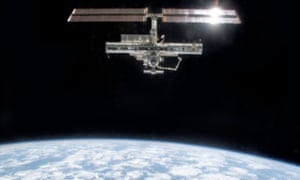A new study suggests that the University of Alabama at Huntsville is lowballing the warming of the atmosphere
by John Abraham, "Climate Consensus - The 97%," The Guardian, March 25, 2015

A very important study was just published in the Journal of Climate a few days ago. This paper, in my mind, makes a major step toward reconciling differences in satellite temperature records of the mid-troposphere region. As before, it is found that the scientists (and politicians) who have cast doubt on global warming in the past are shown to be outliers because of bias in their results.
The publication, authored by Stephen Po-Chedley and colleagues from the University of Washington, discusses some major sources of error in satellite records. For instance, after satellites are launched, they scan the Earth’s atmosphere and calibrate the atmospheric measurements using a warm target onboard the satellite and cold space. The accuracy with which the atmospheric measurements are calibrated can influence the inferred temperature of the atmosphere (called the warm-target bias). Additionally, over the years, multiple satellites have been launched and the selection of which satellite data are used can play a role. Finally, biases can occur because the satellite orbits drift during their lifetime, and the influence of diurnal temperature variation can affect the global temperature trends.
Of these three errors, the last one (probably the most important one) was the focus of the just-published paper.
It is known that there is a problem because there are multiple groups that create satellite temperature records, for instance: NOAA, Remote Sensing Systems (RSS), and the University of Alabama Huntsville (UAH). The problem is that their results don’t agree with each other. In particular, the UAH team, led by Dr. John Christy and Dr. Roy Spencer (who have discounted the importance and occurrence of climate change for years), presents results that differ quite a bit from the others. In fact, in the current paper, it is stated that “Despite using the same basic radiometer measurements, tropical TMT trend differences between these groups differ by a factor of three.”
An important aspect to this issue is that, for many reasons, it is expected that the tropospheric temperatures in the tropics will warm more than surface temperatures. This is called “tropospheric amplification.” According to two satellite groups, there is in fact such amplification. According to the UAH team, there is no amplification. The presence or absence of amplification is often used by some skeptics to discount the importance of global warming.
Why are there differences? Well, that’s part of what this paper tries to answer.
Each of the teams tries to deal with and correct for various satellite errors. For example, sometimes the diurnal cycle effect is removed using temperatures from climate models. The RSS and NOAA teams “apply a drift correction based on the diurnal cycle from a GCM (global climate model), whereas UAH produces a microwave-sounding-unit, mid-tropospheric-temperature, diurnal correction based on temperature comparisons between three co-orbiting satellites ... UAH does not yet correct the diurnal drift for satellites carrying Advanced Microwave Sounding Units because they attempt to use these satellites during periods when the diurnal drift is small.”
The present paper presents a calibration scheme that allowed a diurnal correction to be obtained from the satellite measurements themselves, in particular by solving for a common diurnal cycle correction using temperatures from all available satellites.
As the authors state in the paper, their new results agree with the two groups that show more warming. They disagree with UAH. As the authors state,
So, how do the trends compare? Well, the lowest trends (in degrees Celsius heating per decade) are from UAH, and they equal 0.029 °C per decade for the 1979–2012 period for the mid-troposphere region between 20° South and 20° North. The new results are almost 4 times higher at 0.114 °C per decade. The results using a diurnal correction from a climate model are in close agreement with the new findings (0.124 °C per decade). As additional support, the NOAA and RSS values are also close to the corrected results. The simple fact is – UAH is an outlier.
They also discovered that the results from RSS, NOAA, and the new study all show tropical amplification and are in agreement with the expected amplification from climate models. They state, “There is no significant discrepancy between observations and models for lapse rate change between the surface and the full troposphere.”
To summarize the amplification factor, the new study obtains a value of 1.4. If the diurnal cycle is eliminated using climate models, the result is 1.49. According to NOAA and RSS, the values are 1.31 and 1.10, respectively. Again, UAH is the outlier with an amplification factor of 0.56.
I wrote to Stephen Po-Chedley and asked for a summary. He told me,
In short, the Earth is warming, the warming is amplified in the troposphere, and those who claim otherwise are unlikely to be correct.







No comments:
Post a Comment